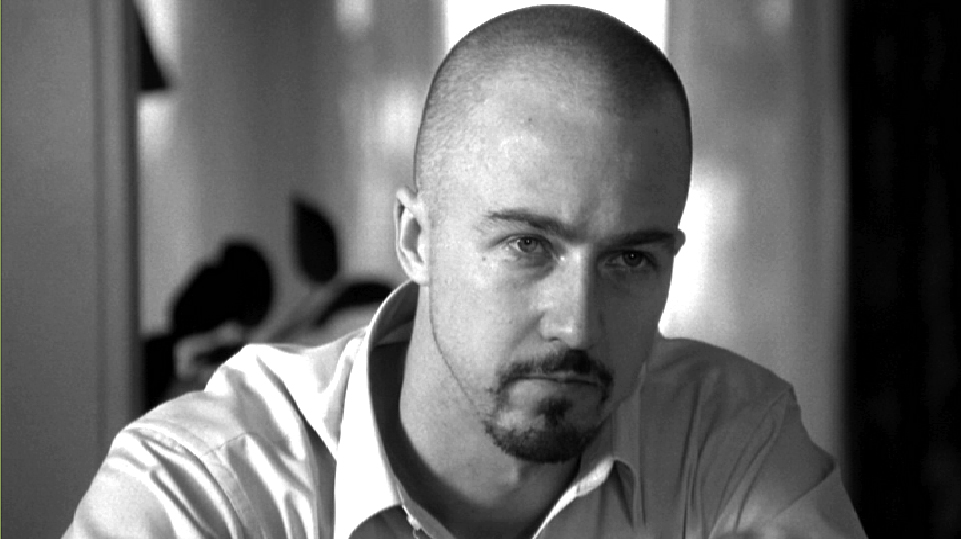
As we all know, film used to be in a black and white format. This was due to the technological constraints upon studios and filmmakers between the late 1890’s and the early to mid 1950’s. In between that time, there were films that featured color (particularly Technicolor).
By the mid 1950’s, though, color film became the norm in American and international cinema. Filming in color had become much cheaper and accessible. As color depicts how most of us see the world, it merely became default to utilize this kind of technology.
However, this did not mean that black and white films were expunged from the cinema landscape. All it meant was that the black and white format was increasingly used for some kind of tangible purpose. As a result, films made in black and white are worth discussing for their intellectual and artistic output.
1. Psycho (1960)
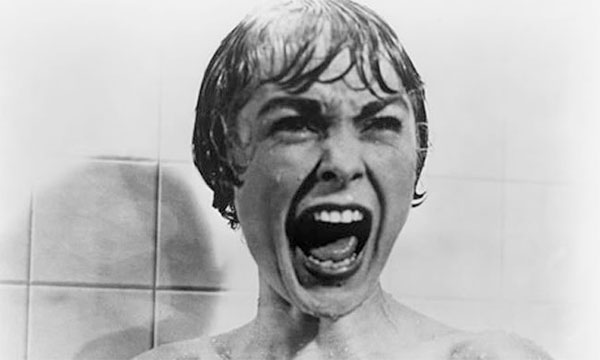
Alfred Hitchcock’s horror classic Psycho is inextricable from its black and white appearance. It is part and parcel of the technical greatness of the film.
Psycho was not initially a hit with producers at Paramount. Upon Hitchcock informing them that he intended to make this horror film, the studio heads expressed great disapproval. Consequently, the budget provided to Hitchcock to make the film was reduced to $800,000. As black and white film is cheaper to use than color, Hitchcock elected to film Psycho in this manner.
Furthermore, Hitchcock knew from an early point he wanted to make a gory film that would test the limits of mainstream cinema (shower scene). He thought that his outline for the film might be too visceral in color.
Rather than compromise the film’s set pieces, Hitchcock used the black and white format to get the violence through the censors. This ended up being a good move, as it certainly made Psycho the iconic film it is today.
First and foremost, Hitchcock was a huge film fan. It should come as no surprise that the inspiration for Hitchcock to film Psycho in black and white emanated, in part, from the 1955 French horror film Diabolique. He apparently greatly admired the aesthetic that director Henri-Georges Clouzot had constructed via his use of black and white.
2. To Kill a Mockingbird (1962)
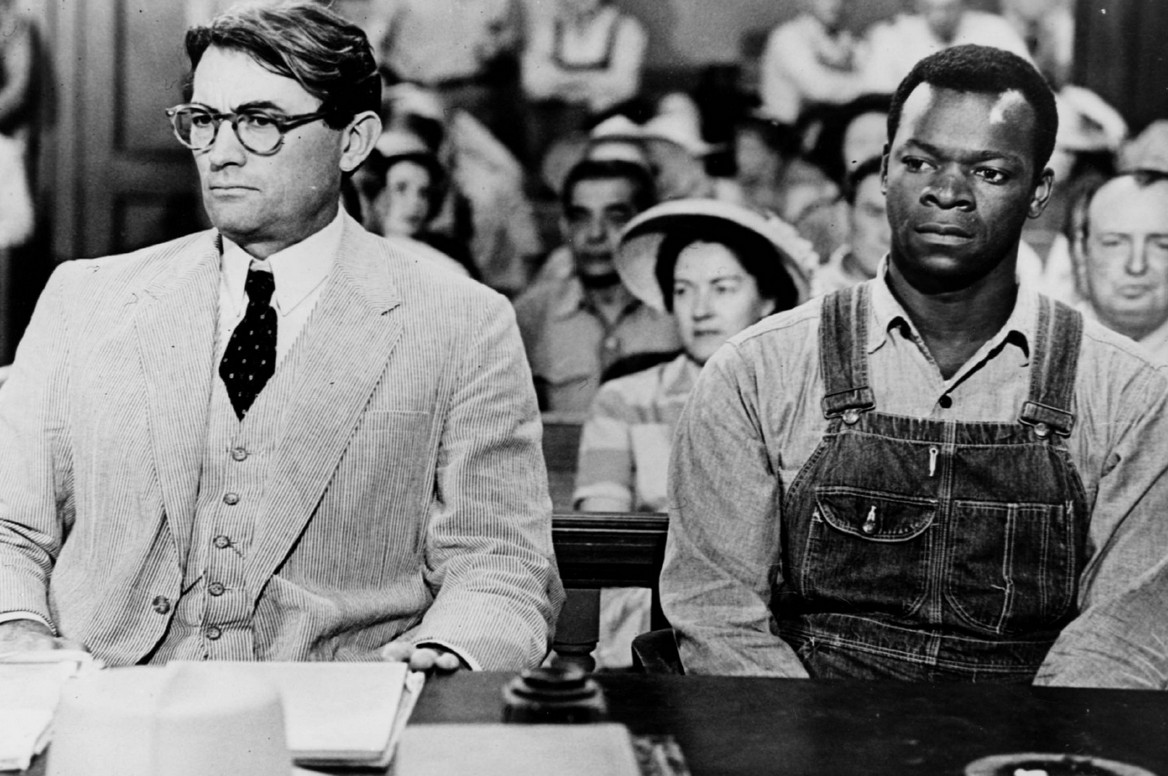
Adapted from Harper Lee’s acclaimed novel, To Kill a Mockingbird brings the very pertinent issue of race relations to the silver screen. For most viewers, the film was faithful enough to the source material, and well-acted enough to be considered a success.
To Kill a Mockingbird was filmed in black and white, which instantly gave it a higher and iconic quality. This is important, as the film need be known and recognized for its commentary on social and racial matters.
Further, the black and white, without saying anything, symbolizes the cracks created by racial disharmony in America. The image never lets us forget, throughout the whole film, that 1950’s America lives under a cloud of overt racial division.
This choice made by director Robert Mulligan is not only artistic, but also socially conscious of the context of 1950’s America. This is a film very much still applicable to today’s society.
3. Dr. Strangelove: Or How I Stopped Worrying and Love the Bomb (1964)
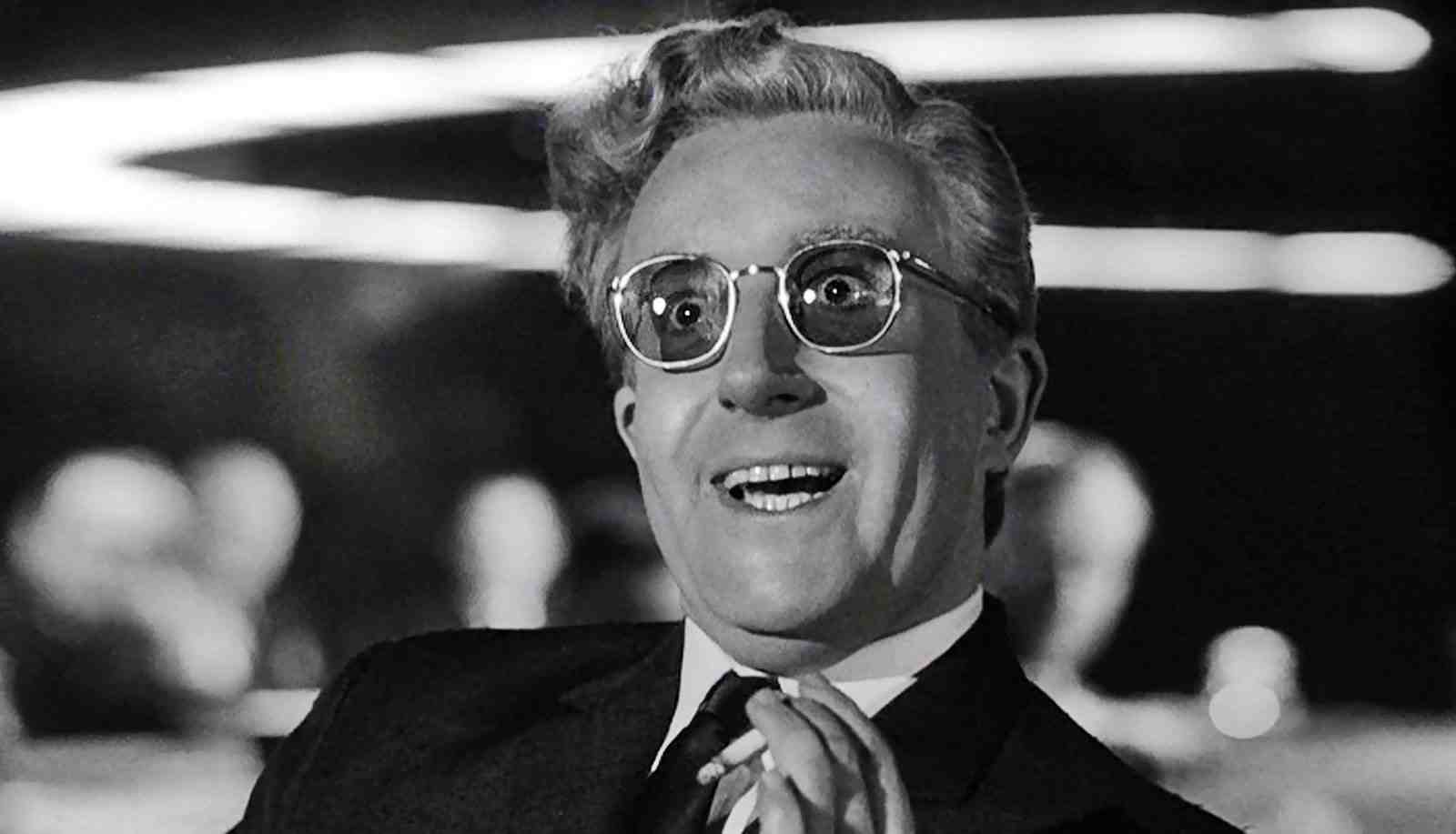
Prima facie, it seems strange that Kubrick would intentionally use black and white film in consideration of his marvelous ability to convey meaning using color (see 2001: A Space Odyssey and the Shining). However, upon greater examination, Dr. Strangelove is all the better for its monochromatic color.
Firstly, it is rather unarguable that Dr. Strangelove would look as beautiful and be as attractive if not for the black and white cinematography projected before us. This is mainly due to Kubrick’s masterful hold over manipulating light sources, and selecting new and diverse ways to frame simple shots.
The black and white format clearly anchors the film in a Cold War context. If it was to be depicted in color, this would defy the way in which most households were experiencing the Cold War. Kubrick’s black and white image certainly gives the contents of the film a more genuine feel; as though it is another broadcast. This is especially useful in relation to the newsreel scene.
4. The Last Picture Show (1972)
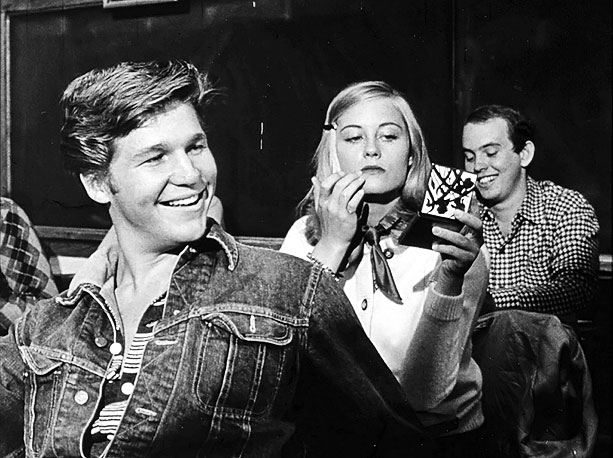
Peter Bogdanovich’s masterpiece ‘The Last Picture Show’ is a prosaic study of how place shapes character. The film is wholly interested in depicting, not telling.
That is where the use of black and white assumes importance. Bogdanovich allows us to observe the everyday events of the adolescent characters in Anarene, Texas, without directorial or emotional interference.
As the title suggests, the local cinema in Anarene is closed by the end of the film. This is not the only business to have failed in Anarene; as Bogdanovich displays boarded up businesses and desolate streets.
Anarene is a 1950’s town in severe decline. The black and white image reflects the anaemia and lifelessness of Anarene. The lack of color in the image projected to us, through its very form, portrays the economic, cultural and spiritual death of Anarene.
Similarly, the desolation of this Texas small-town has real ramifications for its youth. The three main characters of the film, Jacy (Cybill Shepherd), Duane (Jeff Bridges) and Sonny (Timothy Bottoms) feel the brunt of Anarene’s erosion. They are left with little prospects, and very little to occupy themselves with other than sexual encounters. The absence of color thereby acts, in part, to mourn the relatively negative outlooks of young Texans in Anarene.
As the film is set in the 1950’s, Bogdanovich’s black and white image adds to the authentic properties of what is being depicted. Many of the shots in The Last Picture Show resemble the way films were shot in the 50’s.
For example, the romance scenes usually feature shadowy overtones, and predominant camera focus on the woman involved in the scene. With the black and white, it would not be absurd to have thought that this could have been filmed in the 50’s (aside from the strict censorship of sexual relations).
5. Eraserhead (1977)
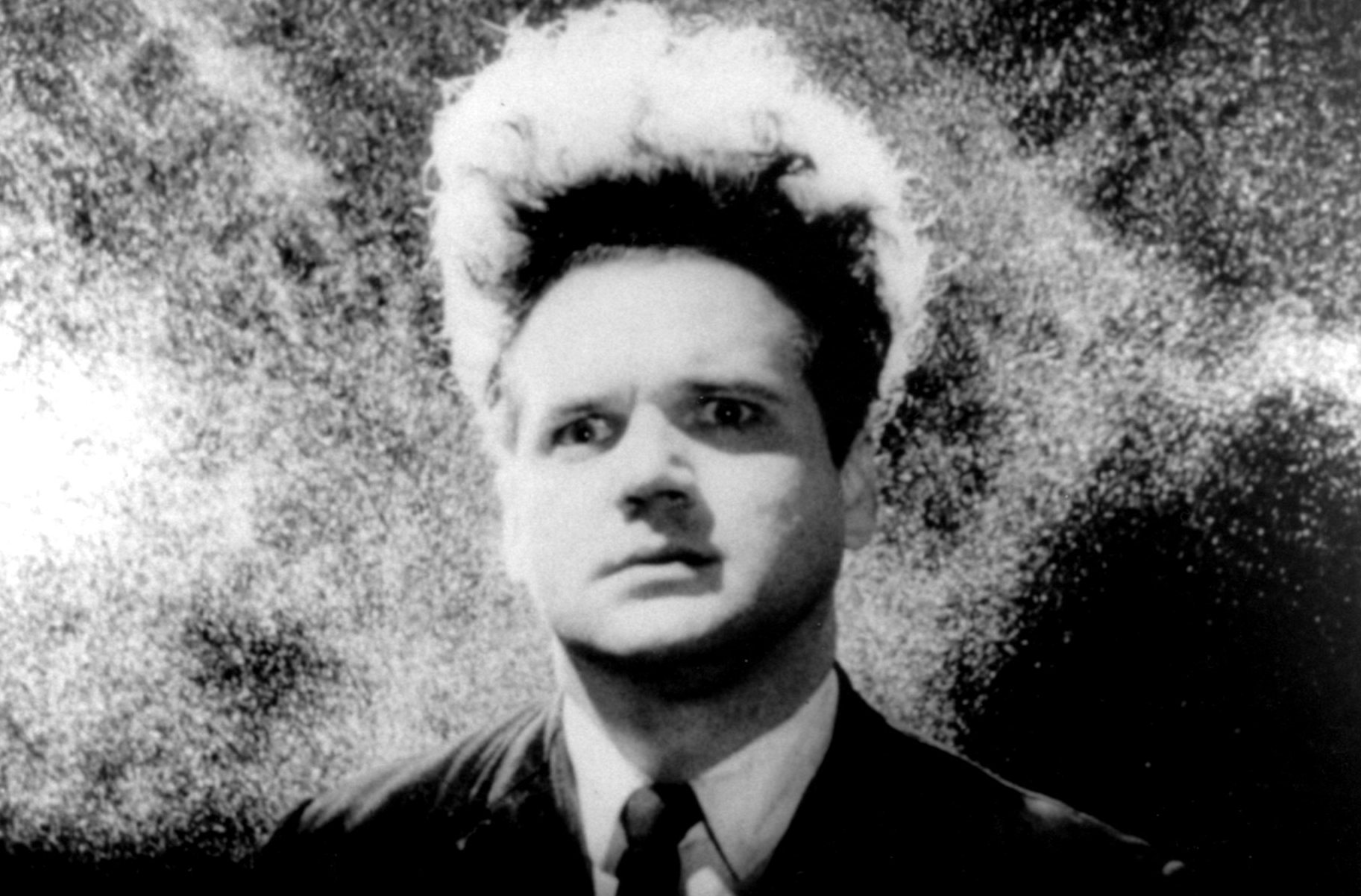
Amazingly, Eraserhead was David Lynch’s first film. At that point, he obviously was yet to garner the support and adoration of film fans, producers and the like. For this reason, the making of Eraserhead was a drawn-out process. It took years to properly make the film, and at the same time budgetary restrictions had to be attended to.
It could be said that Eraserhead was simply made in black and white because it was cheaper than using color. This was surely one of the assessments Lynch made when conceiving Eraserhead. However, this economic approach to Lynch’s filmmaking is to significant undercut his genius.
For artistic purposes, Lynch used black and white in Eraserhead to visually invoke surrealism. The black and white image in Lynch’s hands is very malleable, and therefore lends itself well to the crazily unexpected events that occur in Eraserhead.
Rather than view Eraserhead as a nonsensical, disruptive film, the black and white helps us to understand that it is Lynch’s very intention to drape the film in surrealism. However, at the heart of it is a powerful depiction of the tribulations of raising a child without support.
6. Manhattan (1979)

Manhattan, as the title suggests, is as much about depicting the burrow itself as the characters whose lives Woody Allen keys us into. A lot of credit goes to cinematographer Gordon Willis, of the Godfather fame, for portraying New York in such a gracefully imposing way.
The actual contents of Manhattan give us a fair idea of Allen’s motive behind filming in black and white. In the prologue of the film, in which Isaac Davis (Woody Allen) is addressing the audience about his untainted love for New York, he announces that he always imagines New York in black and white with Gershwin music.
As it is well-known that Allen’s characters are often some kind of replication of himself as an individual, it is safe to assume that Allen imagines New York in this way.
Thus, the depiction of a black and white New York further personalizes the events and landscapes in the film. We feel that we are getting an insight into Allen’s own image of what New York is as a living, breathing thing.
7. Raging Bull (1980)
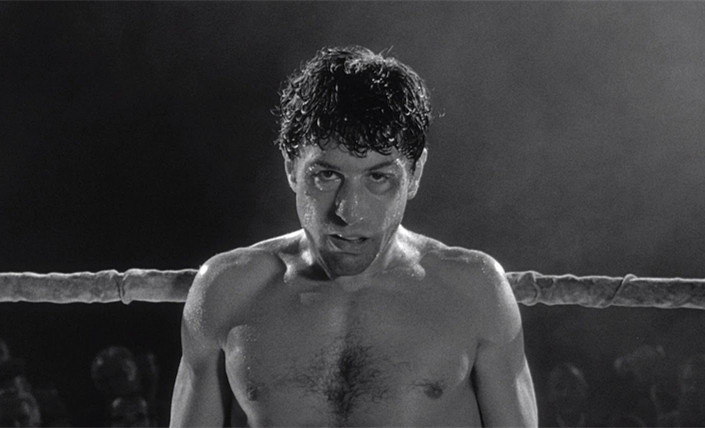
Martin Scorsese’s intense character study of troubled boxer Jake LaMotta is unlike any other film ever made. For this, there are a number of reasons. It seems to transcend genre; it certainly doesn’t neatly fit into the drama or sport category. It is episodic; held up by no particular storyline other than observing LaMotta’s (Robert De Niro) day-to-day outbursts.
The film mostly takes place in 40’s and 50’s New York. Scorsese’s use of black and white isn’t so much to add authenticity to it, but rather to add directorial comment to the state of LaMotta’s paltry and pathetic existence.
Thanks to Scorsese’s levelling direction, Chapman’s gritty cinematography and Schrader’s low-brow script, Raging Bull holds the impression that we are watching a caged beast trying to break free of its cage. In this way, Scorsese doesn’t leave much room for us to feel anything for LaMotta and those he interferes with. It is just a curt examination of character.
That’s where the black and white really comes into play. The overtones that the black and white image creates; namely one of regret, sadness and missed opportunity, wear into our viewing experience.
Instead of seeing a man at the peak of his powers, we see a man beholden to his ugliest inclinations. The black and white image acknowledges not that LaMotta is an unredeemable character, but that his erroneous choices have led to a destructive and empty life.
There is a brief injection of color into the film, when Joey (Joe Pesci) and LaMotta get married, have children, and experience ephemeral happiness.
The color here obviously functions to show that this is a juncture wherein LaMotta’s relationships find harmony. Scorsese projects these times through snapshots, as though to suggest that happiness for the LaMotta family is few and far between.